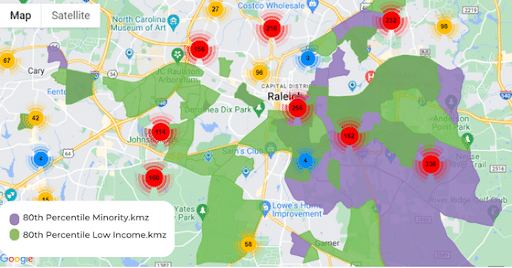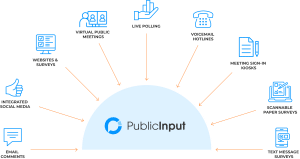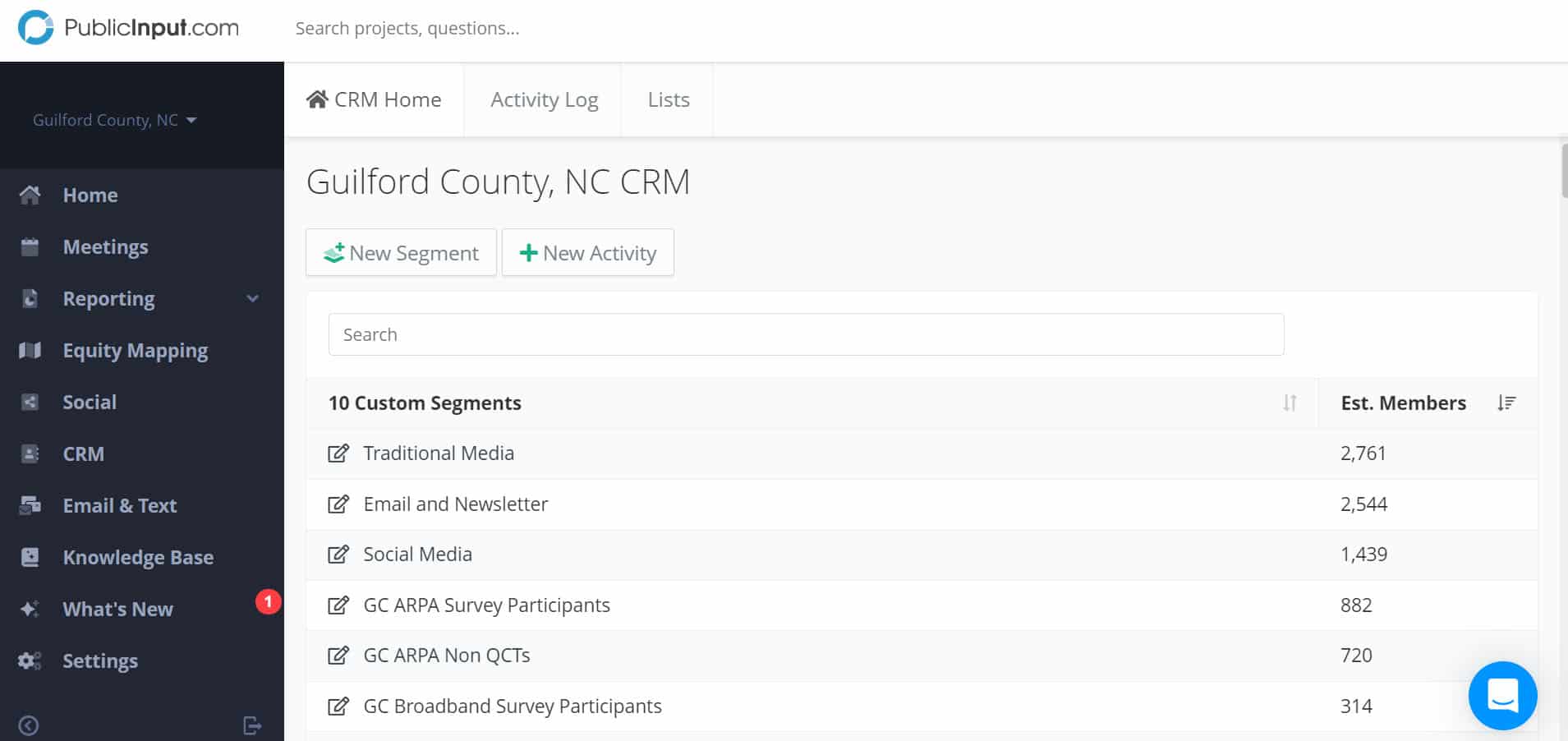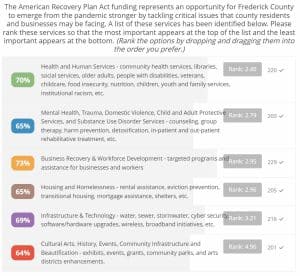
A Tailored Approach to Community Engagement
With more than 3,000 county governments across the United States, the importance of building community relationships is a universal challenge regardless of the demographic makeup. There is no one-size-fits-all approach.
Whether it is supporting public infrastructure, transportation, public health or economic development, counties across the U.S. work hard to ensure that residents are healthy, safe and have access to transparent public information.
These reasons are among countless others that county governments use the PublicInput platform to facilitate the critical collaboration that supports the work that occurs between county governments, residents and stakeholders.
Three Reasons Why County Governments Choose PublicInput
1. To Understand the Perspectives of Residents
Engaging a broader more representative sampling of community input can be uniquely challenging for county governments. Faced with engagement challenges impacted by both geography and demographics, an equitable approach is mandatory for many counties.
The most equitable community engagement approaches are those that are tailored with both community context as well as geographic and demographic makeup considerations.
The PublicInput Equity Mapping solution offers counties a straightforward way to map and layer community data from the EPA, Census, and even the federal government’s “Disadvantaged Community Dataset” to illustrate the “demographic story” or context of the community.
The below PublicInput equity map using Wake County, NC engagement activity is an example of how the associated geographic location as well as associated demographic variables can provide valuable context.

Pulling together local input with publicly available data provides counties with answers to questions on both the effectiveness of outreach (did we reach our target audience?) as well as opportunities for future engagement (who did we miss?). In addition to this, the PublicInput Equity Mapping solution gives county staff the ability to:
-
- Demonstrate which projects serve or impact disadvantaged communities
- Demonstrate quantifiable engagement among participants by target/demographic
- Filter and analyze responses and comments from specific target areas/demographics
With the ultimate goal of understanding the perspectives of residents, county staff can feel confident that they have received a broad and representative sampling of the input needed to make defensible recommendations to decision makers.
2. To Manage Community Relationships and Resident Input
From public affairs to public trust and decision-making, counties rely on two-way communication to reach and engage residents. The methods by which counties build and maintain durable relationships with residents and stakeholders is crucial.
Research shows that the digital experience with a government agency is a strong predictor of their overall level of trust.
Outside of mission and legislative platforms the digital experience is the only driver of trust that can be immediately addressed by governments.
Planning and executing engagement tactics tailored to the specific needs and preferences of the community can become cumbersome and inefficient when using disconnected single purpose tools. To solve this, PublicInput offers county staff an integrated set of community engagement solutions. Including both online and offline options, the PublicInput platform meets resident expectations regardless of the community size or composition.

See the results from our national survey of US resident perceptions around community engagement preferences in “Residents Weigh in on Post-Pandemic Community Engagement Preferences.”
3. To Close the Feedback Loop with Residents
Documenting and sharing the impacts associated with decision making with affected residents is a critical part of maintaining public trust. Whether it is ADA, Title VI, or other laws that mandate considerations of the public, PublicInput helps county staff meet their compliance responsibilities.
From public meetings and online surveys to voicemail, PublicInput makes it easy to capture and manage collected data in one centralized location. Once collected county staff can easily document their engagement efforts and communicate the results back out to residents and stakeholders.

Above Screenshot:
The PublicInput CRM offers Clark County, NV staff a safe and secure archival and segmentation feature that builds with each new interaction. Learn how Clark County expanded their reach and grew a database of engaged residents.

Above Screenshot:
Guilford County, NC uses the PublicInput CRM to manage engaged residents by topic and interest area.
Using the powerful automated analysis and reporting tools to develop insights, county staff have the flexibility to share results at any step of the engagement process.

Above Screenshot:
Frederick County, MD uses the PublicInput dynamic reporting as an additional layer of transparency to the public. Learn how Frederick County used PublicInput automated real time reporting and analysis
PublicInput Supports Countywide Community Engagement
PublicInput is used across the U.S. and widely supported by a large and growing community of local and state government practitioners along with over 200 consulting firms.
See how Hillsborough County, Florida used PublicInput to overcome community engagement challenges associated with engaging both rural and urban populations in our case study “The Challenge of Reopening Hillsborough County.”
Want to learn more about how PublicInput can help with your county’s community engagement efforts?



